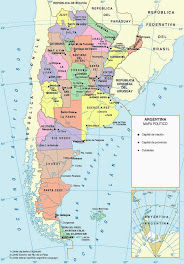“Ours is a poor province with endemic poverty,” the Governor of the northeastern province of Misiones in Argentina, Maurice Closs highlighted as he announced that so far this year 206 children have died of malnutrition in his province.
Misiones, which borders Brazil and Paraguay, is home to one million people. Its main source of revenue comes from agriculture and tourism, and despite federal subsidies to combat poverty, it appears that far too many are finding the task of feeding their children an impossible one.
The subsidised Zero Hunger project (Hambre cero), was set up to detect and assist malnourished and underweight children. It distributes baskets of basic foods to the poor, and Governor Closs says it has helped 130,000 children. It has not however been able to solve the problem with estimates suggesting there are still 6000 cases of malnutrition.
Quite alarming really considering Argentina has a GDP per capita more or less equal to that of the EU’s Latvia.
 |
| San Ignacio Ruins |
But with the Guarini in Paraguay laying claim to the land, Misiones didn’t officially became a province of Argentina until 1876 when Paraguay, who had invaded nine years earlier, was defeated by the allied forces of Brazil, Argentina and Uruguay in what is known as the War of the Triple Alliance.
Historians still debate the real causes of the dispute, which saw tiny Paraguay declare war on mighty Brazil, but the result was devastating for the former, wiping out between 60-90% of its entire population. Misiones however, now a real part of Argentina, began to prosper as more European immigrants, principally Ukrainian and Polish farmers, flocked to the area to take up the occupation of harvesting yerba mate, the plant from which Argentina’s national hot drink comes.
 |
| The Iguazú Falls are 2.5km long |
But despite the abundance of the yerba, the Jesuit ruins and Iguazú (the UNESCO World Heritage site and arguably the world’s most spectacular waterfalls), Misiones is still struggling economically.
In the 1990s, 33 out of every 1000 children died from malnutrition, and though Governor Closs points to the success of the Zero Hunger project in reducing that figure to its current 12.9 per thousand, Misiones’ economic output is still 40% below the national average, and with 329 child deaths in 2009 and the 206 so far this year, things need to improve for the province’s young and poor families.









According to the latest census, population is growing substantially in Argentina, and in Missiones in particular:
ReplyDeletehttp://noticiasdelacalle.com.ar/ampliar.php?id=29377
this will certainly not help the problem of malnutrition and poverty.